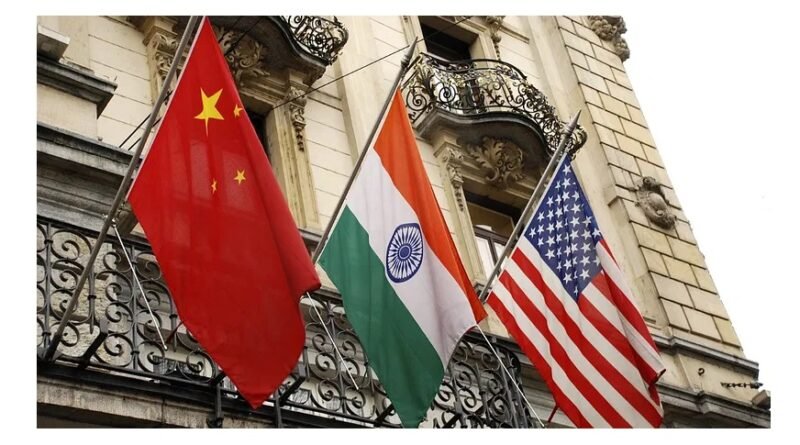Nominated members can’t vote to elect Delhi mayor, says SC, extends wait for polls
The FBIS used to monitor open-source media reports for American intelligence. There might just be more instances of Chinese balloons used over India in the recent past.
Officials in the United States say that Chinese President Xi Jinping didn’t know about the balloon mission. In July 1978, a Chinese balloon was spotted over India, conducting surveillance and espionage activities. India removed travel restrictions on passengers coming from China, Thailand, Singapore, Japan, and South Korea. Chinascope digs into the latest news – and archives – from China and the world.
China over the week
A Cold-Waresque crisis was on display last week when Chinese defence minister Wei Fenghe declined to pick up US Secretary of Defense Llyod Austin’s phone call. China’s defence ministry spokesperson Tan Kefei explained the reason behind it: “Given that this irresponsible and seriously wrong approach by the US side does not create the proper atmosphere for dialogue and exchange between the two militaries, China does not accept the US proposal for a call between the two defence ministers.”
Meanwhile, the Chinese foreign ministry and State media claimed that the spy balloon, spotted over US territory on 1 February and later shot down by the Pentagon five days later, was only a civilian airship.
But US officials have doubled down on their claim that the Chinese balloon was carrying surveillance equipment. They said that they watched the balloon over their territory with U-2 planes to understand its capabilities before bringing it down over a waterbody.
A US State Department official reportedly observed that the balloon was carrying “multiple antennas … likely capable of collecting and geo-locating communications” and “solar panels large enough to produce the requisite power to operate multiple active intelligence collection sensors,” according to NBC News. The US will now study the debris of the balloon.
The official also said that the US is confident that the manufacturer of the balloon “has a direct relationship with China’s military and is an approved vendor of the [People’s Liberation Army], according to information published in an official procurement portal for the PLA”. The Chinese balloon was a part of the wider fleet of surveillance balloons spotted over multiple countries, including Japan, India, Vietnam, Taiwan, and the Philippines, added the US official.
“What the Chinese have done is taken an unbelievably old technology and basically married it with modern communications and observation capabilities,” reported The Washington Post, citing comments by US officials.
We have now learned some more details about the Chinese balloon.
According to sources who spoke to Bloomberg, the Joe Biden administration told US lawmakers that the Chinese balloon had Western-made parts bearing markings in English instead of Chinese. The Chinese foreign ministry disagreed with the characterisation. “[It is] probably a part of the information and public opinion warfare the US has waged on China,” the ministry responded.
The Chinese State media has tried to pose a counter-narrative to the US’ revelations about the pervasiveness of the Chinese balloon programme — running op-ed headlines such as ‘Balloons can get out of control, but not Sino-US relations!’ and ‘The US urgently needs to face up to China’s stance’.
“In the past few days, a ‘black swan’ incident caused by a ‘stray balloon’ has caused continuous excitement and restlessness in the American public opinion field. The strange talks and absurd performances of various politicians and the media have concentratedly exposed the three chronic diseases of American society,” said an op-ed without a byline in Beijing Daily.
While the op-ed called out American media and the public for acting out of ‘restlessness’ over a stray balloon, in the same breath it said that the US has also engaged in surveillance activities in the past. “The US military has also used strategic reconnaissance balloons to break into the airspace of other countries for photographic reconnaissance,” said the Beijing Daily article.
The incident has raised questions about who in the Chinese leadership authorised balloon surveillance over US territory right before secretary of state Antony Blinken’s visit to Beijing.
US officials believe that Xi Jinping may not have been aware of the balloon programme. The claim was forwarded at Capitol Hill briefing for US lawmakers.
“Lawmakers were told Thursday that the order to send the balloon was dispatched without Chinese President Xi Jinping’s knowledge, sources familiar with the briefing said,” reported CNN.
But the assessment is still a working theory, and there is no definitive source to prove that Xi didn’t know about the programme.
The US didn’t stop with the ‘revelations’ on the Chinese balloon surveillance. It has added five Chinese companies and a research institute reportedly linked to the balloon programme to the sanctions list.
The global attention on China’s use of balloons for surveillance may be recent, but the strategy isn’t new for Beijing. And they have been deployed over India’s airspace in the past.
A 1978 report by the US’ Foreign Broadcast Information Service (FBIS), an open-source monitoring agency that is now defunct, cited a news report by National Herald and said that a Chinese balloon was spotted over India in July of that year. “In its 19 July issue, the Indian paper National Herald reported that a Chinese balloon had dropped leaflets near Ranga village in India. The paper pointed out that this was not the first time that China had balloons carry leaflets and espionage equipment over India and that one week ago, a Chinese balloon dropped leaflets and a radio for espionage purposes over an area 50 km from Allahabad city in India,” said the 21 July 1978 report, now declassified, by the FBIS.
The FBIS used to monitor open-source media reports for American intelligence. The 1978 report provides a rare insight into the use of surveillance balloons by China over India based on open-source material. There might just be more instances of the programme being carried out over India in the recent past as well.
The balloon story may die down, but the new phase of tensions between the US and China is likely to prevail in the next few months. They may be diffused during the likely in-person meeting between Joe Biden and Xi during the G20 summit in New Delhi this year.
Meanwhile, Canada and the US have shot down two unidentified objects in two separate instances. We don’t know yet if these objects are linked to the Chinese balloon programme.
While the balloon saga was playing out, Xi was busy meeting Cambodian Prime Minister Hun Sen in Beijing. Xi proposed a ‘diamond six-sided’ cooperation framework to boost Cambodia-China relations. The six topics proposed are politics, production capacity, agriculture, energy, security, and cultural humanities.
China in world news
New Delhi has removed the mandatory RT-PCR Covid test imposed on passengers coming from China, Singapore, Thailand, Japan, and South Korea. The restrictions were announced in January after a Covid wave ripped through the Chinese population in major mainland cities around December 2022. Even passengers transiting through these countries were made to submit negative RT-PCR tests. The relaxation of the rule will be effective from 13 February onwards.
Must read this week
Key facts as India surpasses China as the world’s most populous country – Laura Silver, Christine Huang and Laura Clancy
India needs to rethink its China strategy at LAC – Jabin Jacob
The Many “One Chinas”: Multiple Approaches to Taiwan and China – Chong Ja Ian
China and Strategic Instability in Space: Pathways to Peace in an Era of US-China Strategic Competition – Bruce W. MacDonald, Carla Freeman and Alison McFarland
The author is a columnist and a freelance journalist. He was previously a China media journalist at the BBC World Service. He is currently a MOFA Taiwan Fellow based in Taipei and tweets @aadilbrar. Views are personal.
(Edited by Humra Laeeq)
Source: The Print




